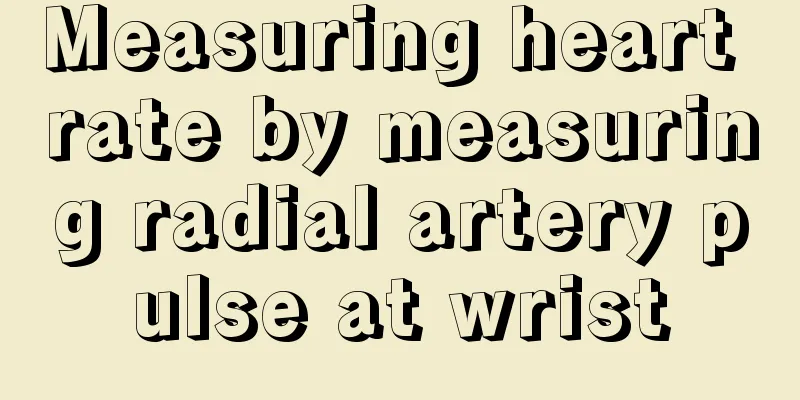Measuring heart rate by measuring radial artery pulse at wrist

|
We all know that many Chinese medicine practitioners usually feel the patient's pulse when treating the patient. For those older Chinese medicine practitioners, they can judge the patient's disease based on the regularity of the patient's pulse. Therefore, some heart rate measuring instruments will measure the heart rate through the radial artery pulse at the wrist. So what is the heart rate measurement through the radial artery pulse at the wrist? 1) Pulse rate is the number of pulse beats per minute, which is consistent with heart rate under normal circumstances. Heart Rate: refers to the number of times the heart beats per minute, based on the first sound. That is, the number of times the heart beats within a certain period of time, that is, how fast the heart beats within a certain period of time. 2) Use a stethoscope to listen directly to the precordial area to measure the heart rate, and use a pulse sensor at the radial artery at the wrist to measure the pulse. When the pulse is weak, one person listens to the heart rate and the other measures the pulse rate. Give the commands "start" and "stop", and two people start at the same time and measure for 1 minute. Recording method: heart rate/pulse rate.3) In a normal person, the pulse and heartbeat are consistent. When atrial fibrillation or frequent premature beats occur, the pulse rate is less than the heart rate. Special circumstances of neonatal pulse 1. Generally speaking, the speed of the pulse is related to age and gender. The younger you are, the faster your pulse is, and physical activity will also speed up your pulse. 2. Generally, for every 1°C increase in body temperature, the pulse rate will increase by 10-15 beats per minute. Therefore, in the absence of a thermometer, you can roughly determine how much the body temperature has risen by counting your pulse. 3. The number of pulse beats is affected by age and gender. Generally speaking, children's pulse is faster than adults, and women's pulse is faster than men. 4. When a child is feeding, having a fever, moving, crying, or being nervous, the pulse rate will increase slightly due to increased metabolism. The pulse rate will slow down by 10-20 beats when resting or sleeping. 5. The above normal pulse values are not absolute. Two children of similar age may have different physical fitness due to their different daily activities. The number of pulse beats may be different or even quite different, but they are both healthy. 6. When children are sleeping, their pulse may be slightly irregular due to the influence of breathing, which is a normal physiological phenomenon. |
<<: Photorejuvenation to remove red blood streaks
>>: 5 km 30 minutes heart rate 120
Recommend
I always feel like I can't finish peeing
There are always advertisements on TV about male ...
How should lung cancer patients arrange their diet? Three dietary principles that lung cancer patients must know
In the ranking of cancers in my country, lung can...
How to clean the scale on an electric water heater
Scale has a great impact on the life of household...
What should you pay attention to when buying nutritional health foods
In modern society, people's concepts are beco...
How is the effect of radiotherapy for small cell lung cancer
If small cell lung cancer is needed, radiotherapy...
Is it better to steam in summer or in winter?
Sweat steaming is a health-preserving and leisure...
Can ginger and honey remove spots?
The skin on the face is the lifeblood of many peo...
How to strengthen the spleen and stomach and remove dampness
If the body has too much moisture, it is easy to ...
Can I have a baby in the early stages of nasopharyngeal cancer?
It is not recommended for patients with nasophary...
Can I still drink expired Tieguanyin?
Many Chinese people like to drink tea, but tea al...
How to treat advanced rectal cancer?
With the progress of the times, people's livi...
Early symptoms of ovarian cancer. Will ovarian cancer lead to menopause?
Ovarian cancer is the most difficult and has the ...
5 kinds of food that office workers should eat to maintain their health in spring
kelp Kelp contains a lot of iodine, which helps t...
Can I use erythromycin if the wound is broken
When a wound appears on your body, you must pay a...
Twelve meridian acupoints
The acupoints of the human body are related to th...









